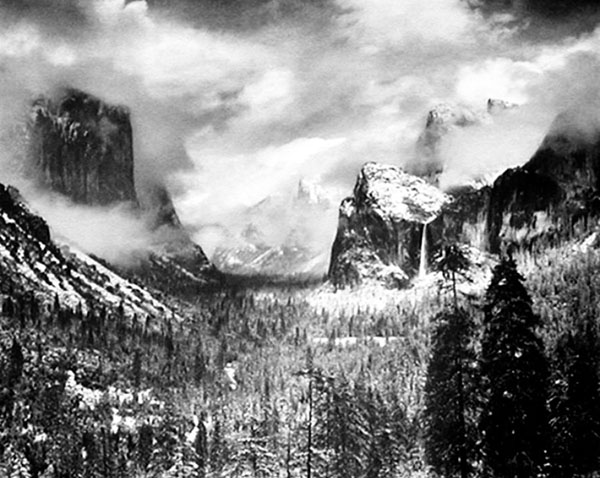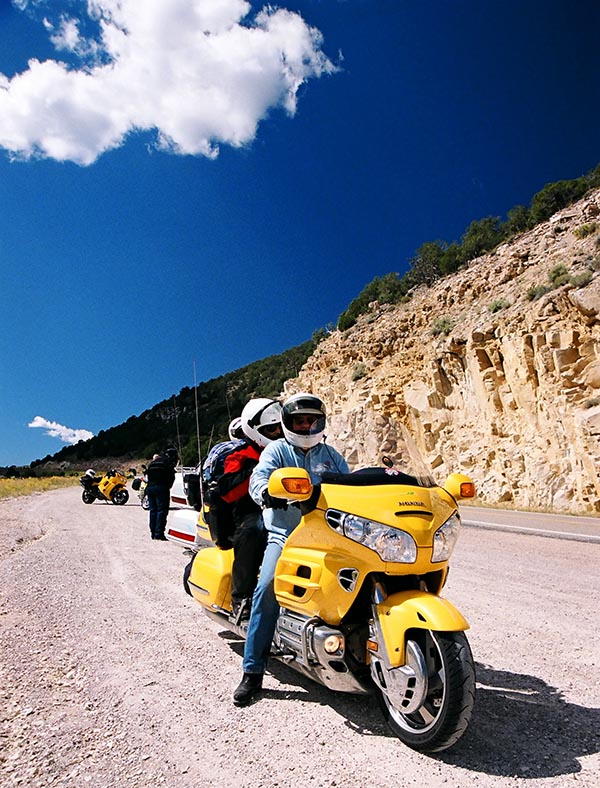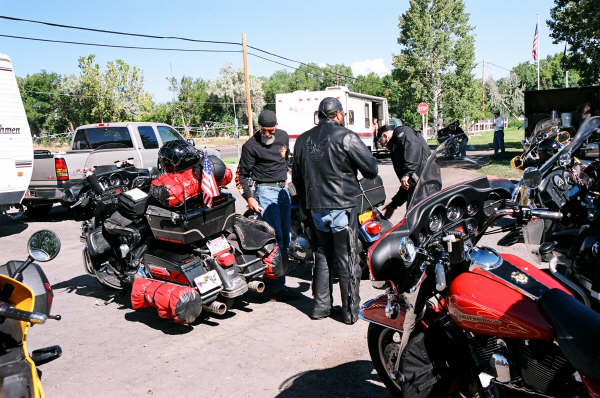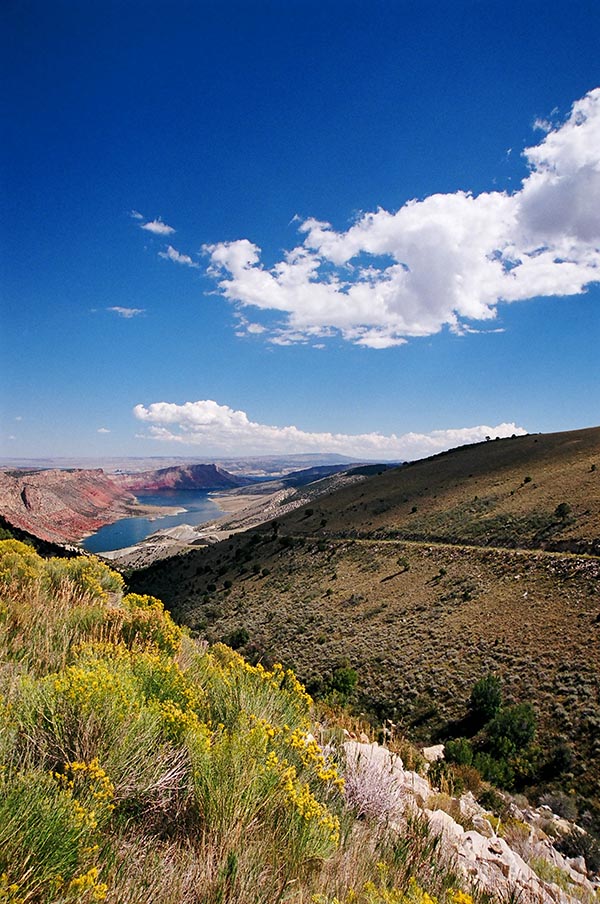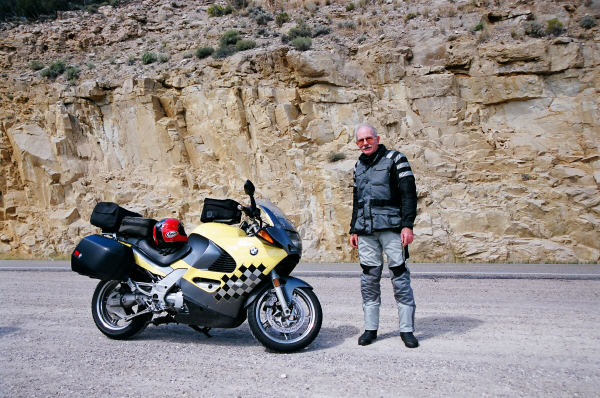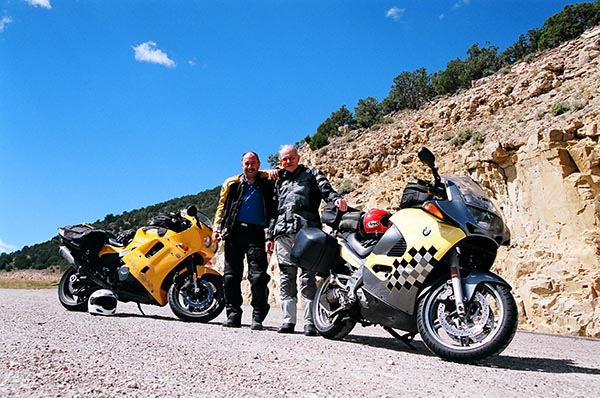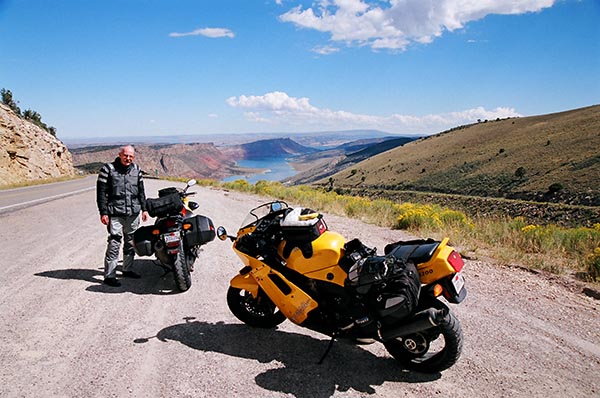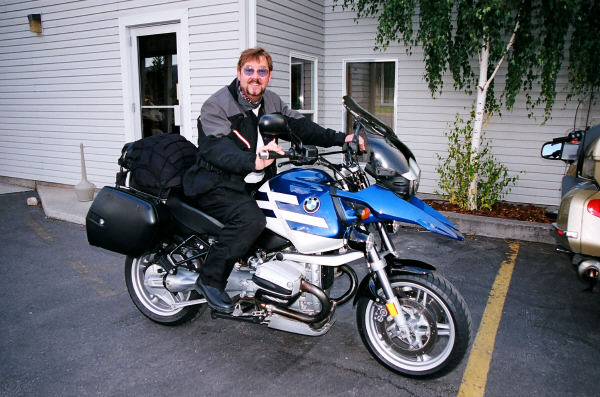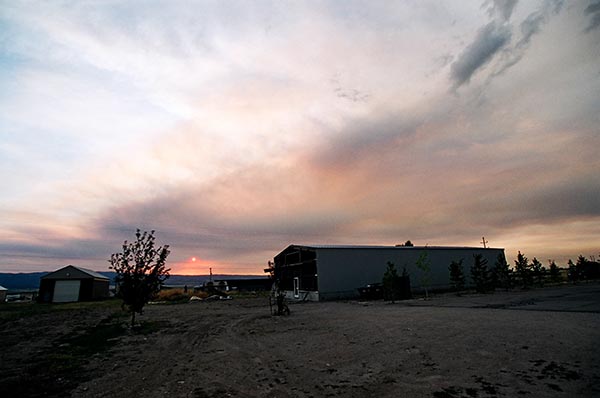Day 4 was a grand day on our 2005 Three Flags Classic adventure! Before you get into it, and if you haven’t read the first three days, you might want to catch up by reading our prior blog posts here:
The 2005 Three Flags Classic Rally: the Intro!
The Three Flags Classic: Day 1
The Three Flags Classic: Day 2
The Three Flags Classic: Day 3
On to Day 4!

I did a dumb thing on the 2005 Three Flags Classic. Well, actually, I did it about a week before. In those days, I was using my Triumph Daytona as a daily commuter, and on the way into work one day, I had picked up a nail in my rear tire. The tire didn’t go flat right away. Nope, we had to make a trip to China Lake later that morning, I rode my Daytona there from the San Bernardino area, and the tire decided to go flat in China Lake. It was a lucky break for me. There’s a lot of nothing on Highway 395 in the Mojave Desert, and the Daytona had the good manners to go flat once we were in town.
Fortunately, there was an independent motorcycle repair shop in China Lake, and he plugged the tire for me. The Daytona ran tubeless tires, and pulling the nail and plugging the tire was no big deal. That’s where I screwed up. I should have replaced the tire, but I didn’t, and it was just one week later that we were off on the Three Flags Classic.
Well, that morning in Driggs, Idaho when I mounted the Triumph and pushed it back, it wouldn’t budge. That’s when the coffee kicked in and I realized the bike wasn’t leaning as much as it should on the sidestand. Uh oh, I thought. I got off the bike, and sure enough, the rear tire was flatter than day-old beer. It was cold that morning, and I was looking forward to getting on the road and feeling the glow from my Gerbing electric vest. What was I thinking, I thought. It was at that moment that I realized that leaving home with a plugged tire had been a dumb move.
Marty had one of those little electrical compressors you attach to your motorcycle battery, so we hooked everything up. Damn, those things take a long time. I’ll bet we sat there for a good 20 minutes, before the sun came up, with Marty’s BMW idling and that very noisy little electric pump banging away. It took that long to get the tire inflated, and I pumped it up to 45 psi reckoning that I would need to either find a new tire or pump it up again most rickety scosh.
I guess I had done okay (or rather, the Triumph’s rear tire had) until I started taking some of the sweepers at high speed the day before in Idaho. A couple of Three Flags riders on FJRs passed me, and we played cat and mouse with those guys for a while. We took the turns at high speed, which probably flexed the tires more than the usual amount, and that most likely loosened the plug that had been installed in China Lake.
We were on our way after pumping up my flat in Driggs, and when we stopped at a gas station somewhere later that morning I found that the pressure had dropped to about 20 psi. So, I plugged the thing again. The new plug would hold all the way to Calgary, and that was a good thing, because I didn’t see another motorcycle shop until we reached that destination. I wised up and bought a new tire in Calgary, but that’s a story for the next blog in this series.
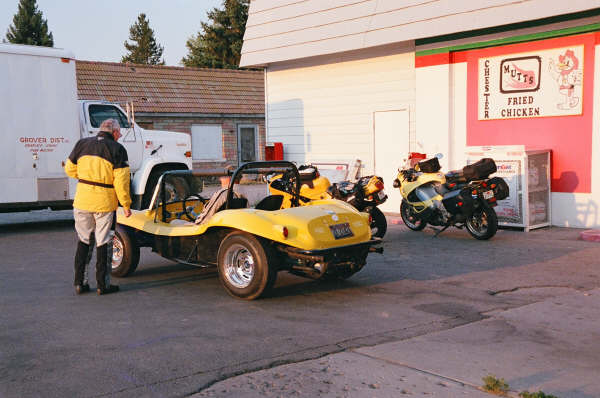

The next day took us into Wyoming. Wyoming had magnificent scenery. We stopped at a bunch of great locations to take it all in. The best parts, for me, were the riding, the photography, and the interesting folks we met along the way who were also riding the 2005 Three Flags Classic. The oldest rider in this event was 89 years old. He received a standing ovation at the banquet a couple of nights later in Calgary. The youngest was 17 years old.
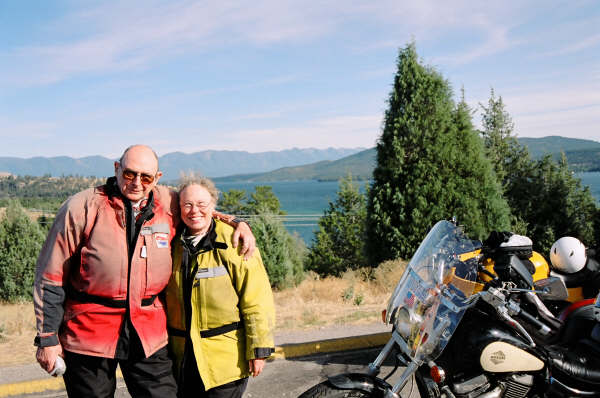
We stopped for lunch in Jackson Hole, Wyoming. It was touristy as hell. It had some great photo ops, but the prices were crazy and the traffic matched the prices. I’d never been there before, so I was glad to make the stop for bragging rights. But (trust me on this) Jackson Hole is not the real Wyoming.


Later that day and we rode into Montana. Montana is another beautiful state. In fact, the scenery on the entire trip was unbelievable. We also saw a lot of game. I saw an entire herd of deer in Montana.
It was getting very cold. I was glad I was riding the Triumph, and I was glad I had that Gerbing electric vest. The Triumph threw off a lot of engine heat, which is not a good thing in the summertime, but it was wonderful in the cold weather. And, that electric vest was heavenly.
Later that day, we hit the checkpoint in Missoula, Montana. It was good to stop for a while and chat with the other riders. Here are several photos from that checkpoint…

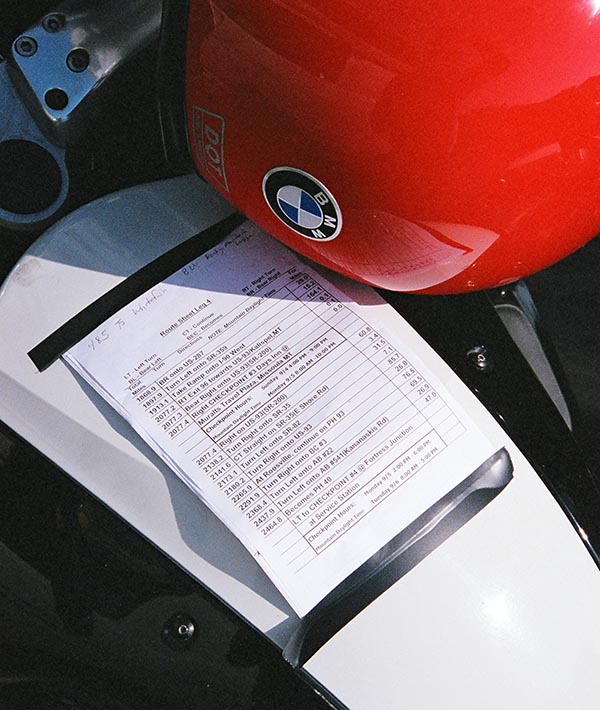


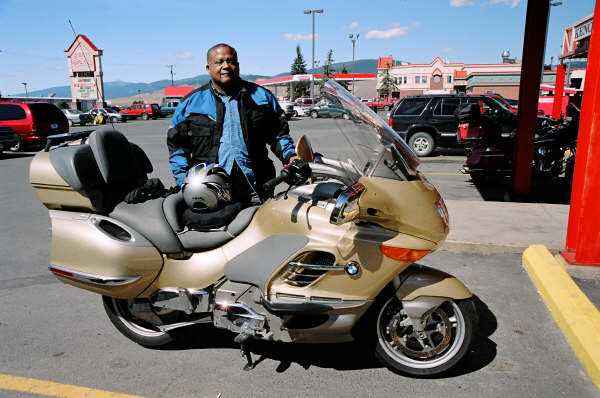
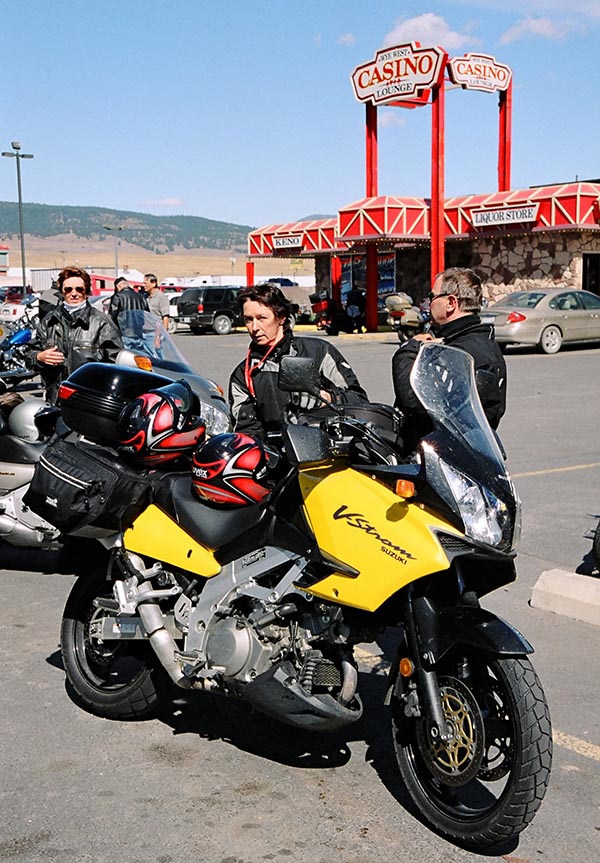

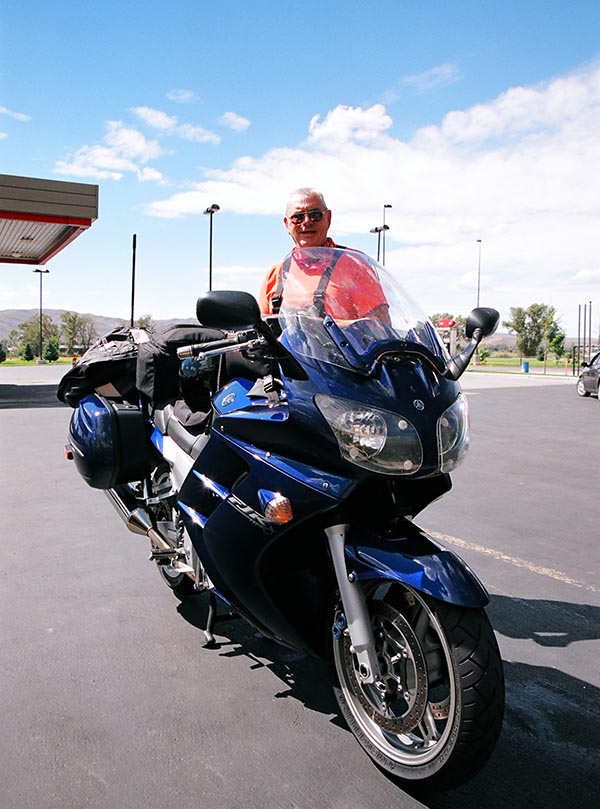
That night, we stayed in Whitefish, Montana, just south of the Canadian border. We walked into town from our hotel and found a microbrewery, and we had a fabulous dinner. Whitefish is a cool town. We walked around a bit and then called it night. The next morning we would ride in Canada on Day 5 of the 2005 Three Flags Classic!
Make sure you don’t miss any of our blog entries by signing up for our automatic email notifications!


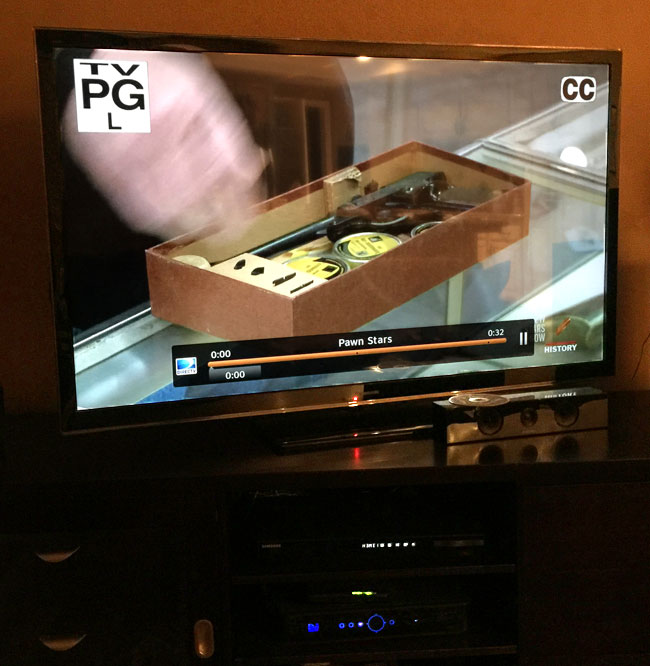
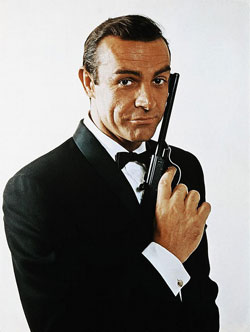
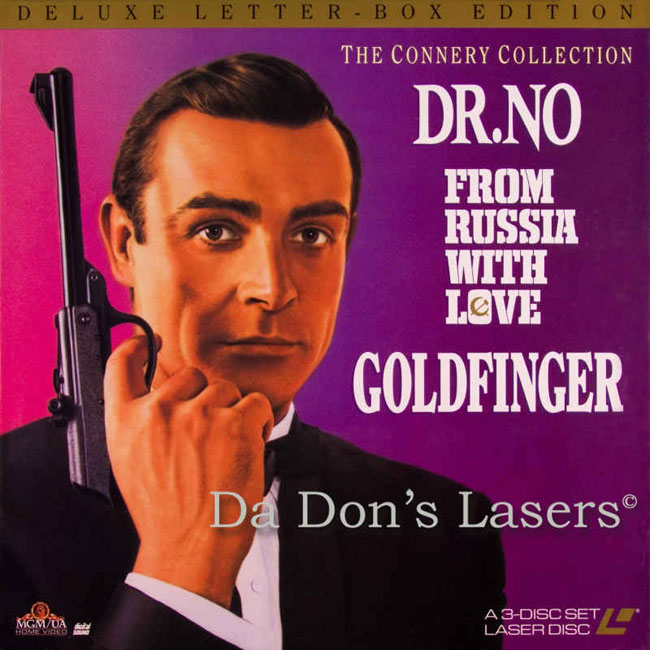

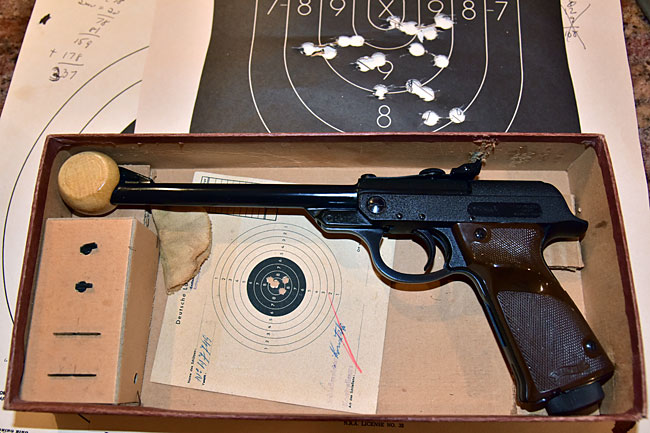
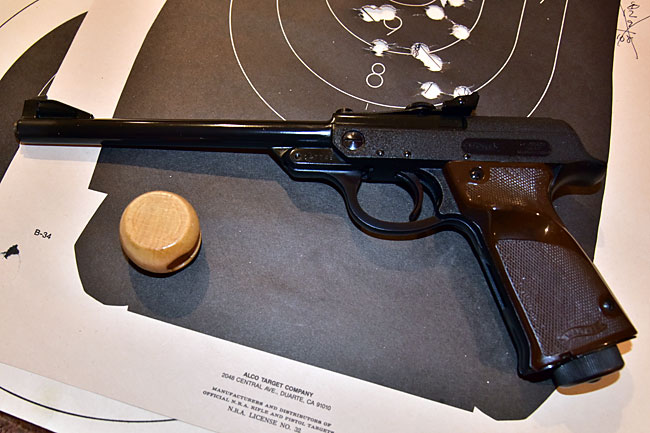

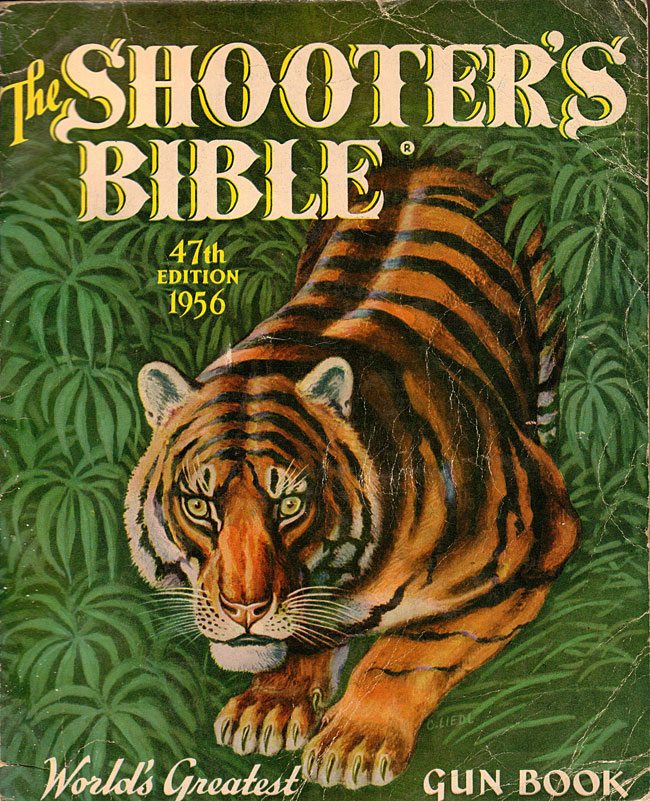

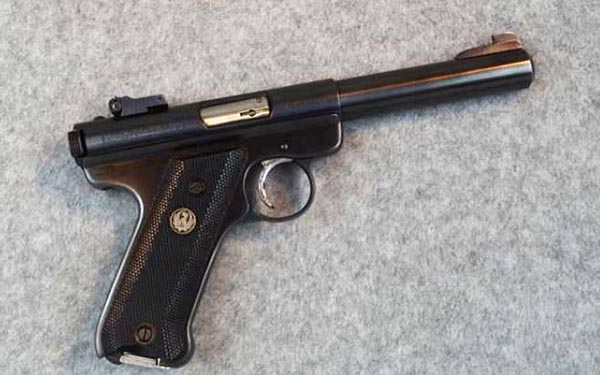 The Ruger would rust if you didn’t keep it clean and the bottles weren’t shattering enough to suit me so the next gun I bought was a stainless steel Smith and Wesson .357 revolver with a 4-inch barrel. When you pulled the trigger you could see the drum turn, the hammer draw back and flames shoot out the sides of the weapon. It was like a miniature cannon. You got dirty shooting the thing. The whole process of firing the S&W revolver satisfied me on so many levels that at this point I was perilously close to becoming a gun nut.
The Ruger would rust if you didn’t keep it clean and the bottles weren’t shattering enough to suit me so the next gun I bought was a stainless steel Smith and Wesson .357 revolver with a 4-inch barrel. When you pulled the trigger you could see the drum turn, the hammer draw back and flames shoot out the sides of the weapon. It was like a miniature cannon. You got dirty shooting the thing. The whole process of firing the S&W revolver satisfied me on so many levels that at this point I was perilously close to becoming a gun nut.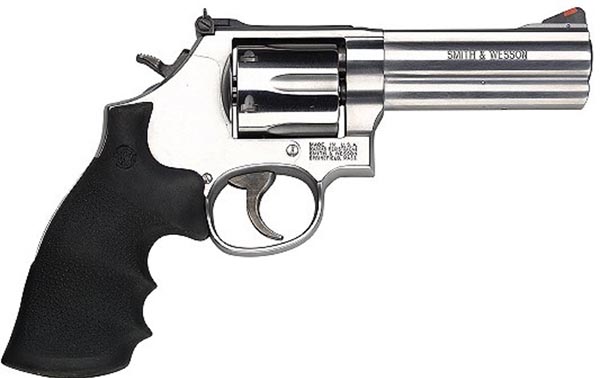 For some reason, maybe it was God’s Hand, I didn’t become a gun nut. The trips out to Kitchen Creek became fewer. The ammunition got more expensive and the two pistols were packed away. It was only a few years ago that I dug the guns out. The Ruger was a mess. Rust had scarred its smooth gun-black finish and the mechanism was stuck. It took hours to get the thing cleaned up and the rest of the day to figure out how the various parts fit back into the handgrip. Being stainless, The Smith was fine, only needing a bit of oil to loosen things up.
For some reason, maybe it was God’s Hand, I didn’t become a gun nut. The trips out to Kitchen Creek became fewer. The ammunition got more expensive and the two pistols were packed away. It was only a few years ago that I dug the guns out. The Ruger was a mess. Rust had scarred its smooth gun-black finish and the mechanism was stuck. It took hours to get the thing cleaned up and the rest of the day to figure out how the various parts fit back into the handgrip. Being stainless, The Smith was fine, only needing a bit of oil to loosen things up.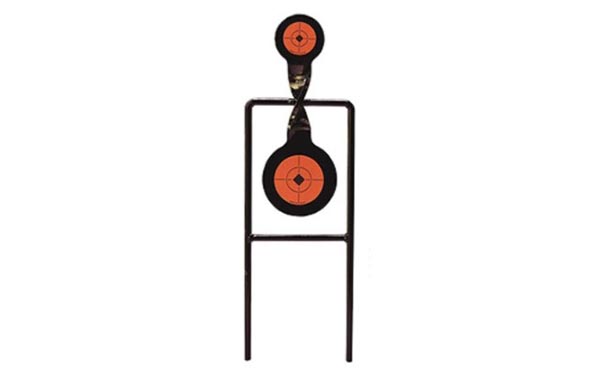 This Christmas CT gave me one of those heavy steel spinner targets, the kind with a large round target on the bottom and a smaller one on the top. When you manage to hit the thing the target spins around like a kinetic lawn ornament. I guess CT enjoyed our day at the range more than I did. Now she wants a Mosberg pump shotgun and one of those scary looking assault style rifles. You know, for home protection. It seems like we might end up with a gun nut in the family after all.
This Christmas CT gave me one of those heavy steel spinner targets, the kind with a large round target on the bottom and a smaller one on the top. When you manage to hit the thing the target spins around like a kinetic lawn ornament. I guess CT enjoyed our day at the range more than I did. Now she wants a Mosberg pump shotgun and one of those scary looking assault style rifles. You know, for home protection. It seems like we might end up with a gun nut in the family after all.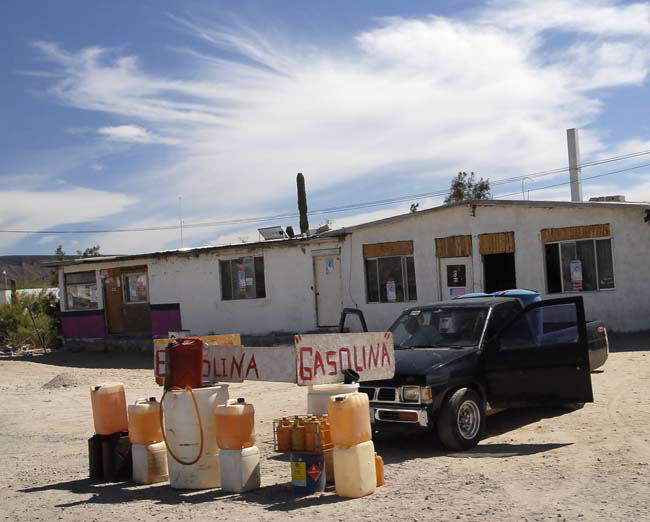

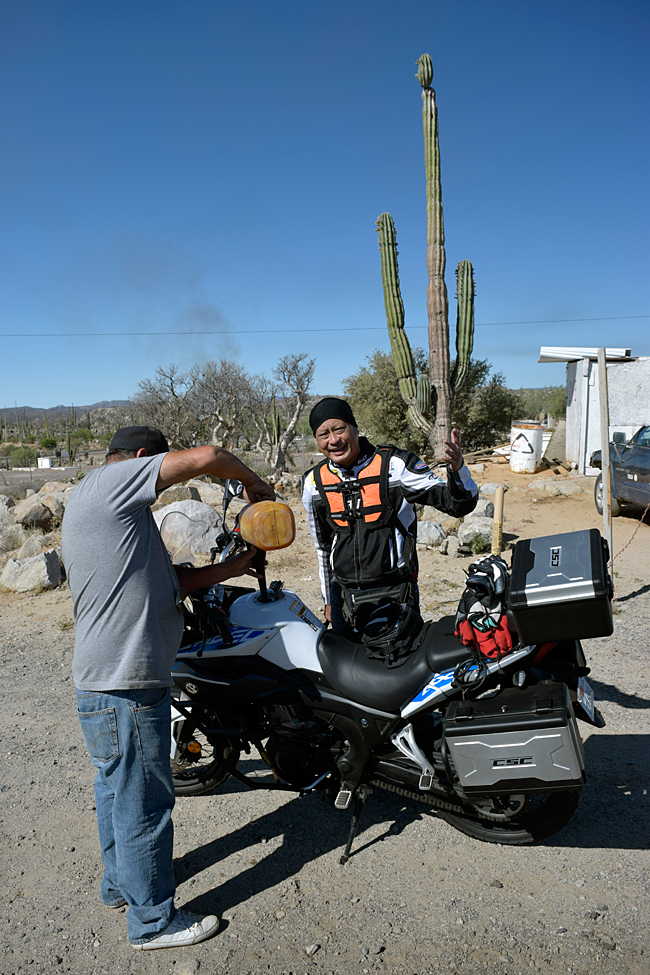
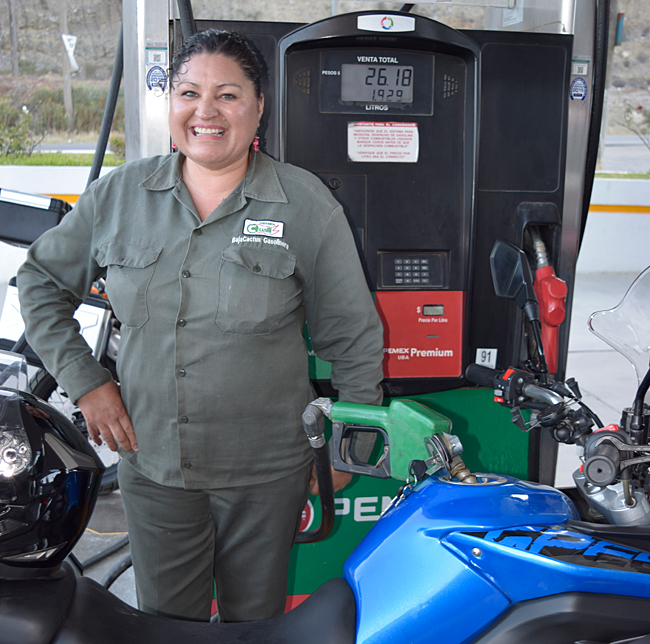

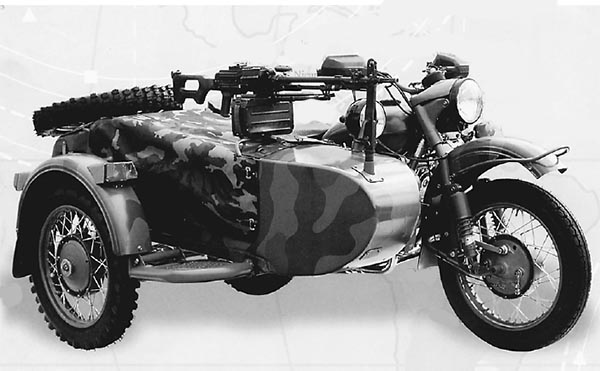
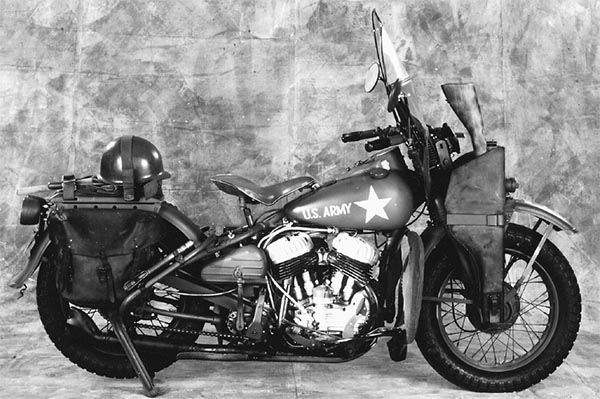

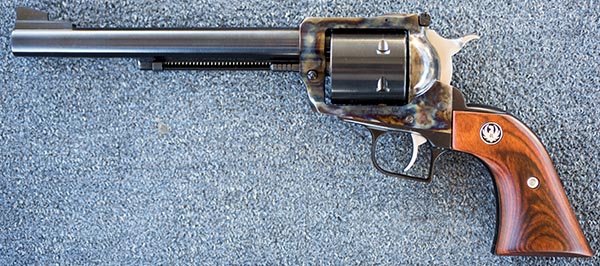
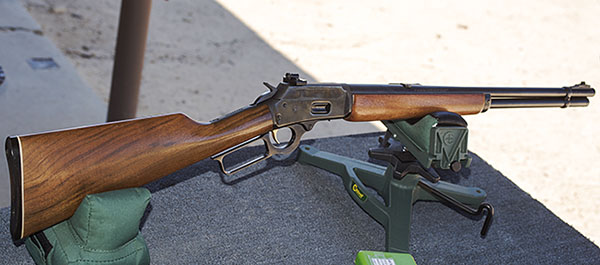
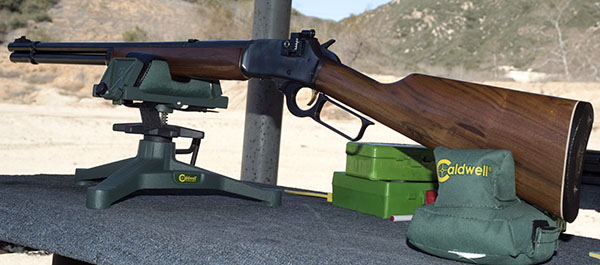
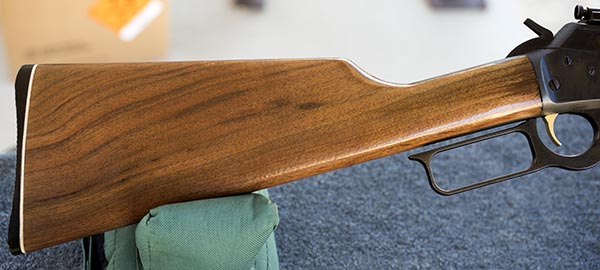
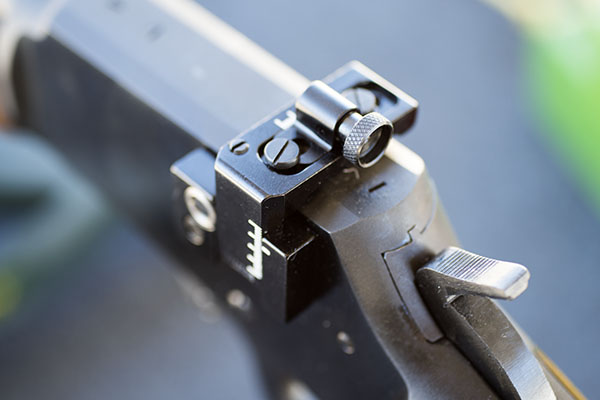
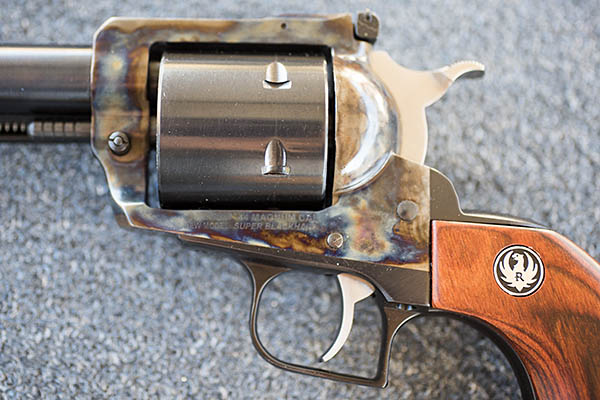
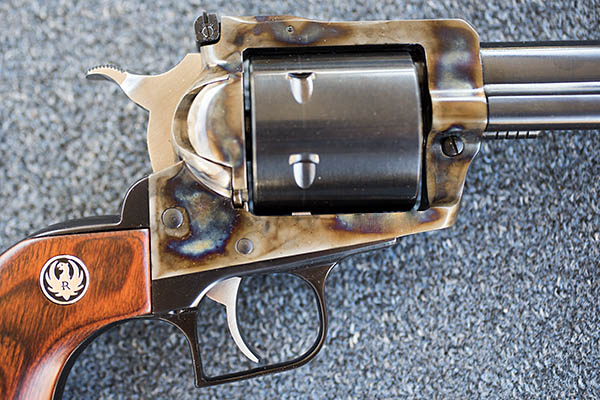
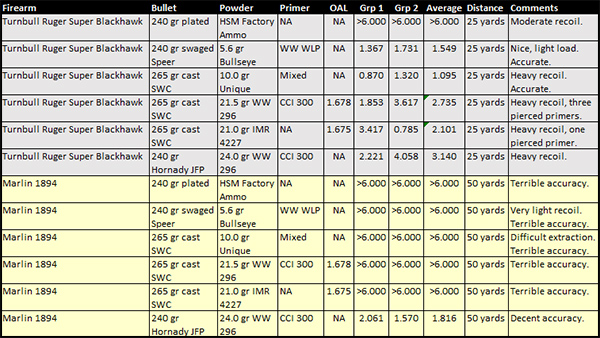
 I log into several online groups as a way of avoiding doing something constructive. One of the groups features photos of New Mexico. Some of the photos are spectacular, some are way over-processed. One guy started labeling his photos as “No Filter New Mexico.” This means the photo has not been doctored beyond the camera’s initial setting. A long-winded argument ensued pitting photographers (the guys who watermark their embarrassing, Willie-Wonka-colored Martin-landscape shots in an attempt to retain rights) and snap-shooters.
I log into several online groups as a way of avoiding doing something constructive. One of the groups features photos of New Mexico. Some of the photos are spectacular, some are way over-processed. One guy started labeling his photos as “No Filter New Mexico.” This means the photo has not been doctored beyond the camera’s initial setting. A long-winded argument ensued pitting photographers (the guys who watermark their embarrassing, Willie-Wonka-colored Martin-landscape shots in an attempt to retain rights) and snap-shooters. If I shoot a scene and then push the photo edit sliders to their limits did I create art or am I just working within an algorithm provided by the software manufacturer? Is the coder who designed the software the real artist? If I successfully dial a number on my cell phone is that art? No way! Now say I invite 500 people to a theater and I go on stage and successfully dial a phone number on that exact same phone. Is that art?
If I shoot a scene and then push the photo edit sliders to their limits did I create art or am I just working within an algorithm provided by the software manufacturer? Is the coder who designed the software the real artist? If I successfully dial a number on my cell phone is that art? No way! Now say I invite 500 people to a theater and I go on stage and successfully dial a phone number on that exact same phone. Is that art? Maybe art is made when its creator declares it as art. Even bad art like those over-processed photos are art if Slider-Man says so. The watermark guys proclaim their saturated images as art, who am I to deny them their petition?
Maybe art is made when its creator declares it as art. Even bad art like those over-processed photos are art if Slider-Man says so. The watermark guys proclaim their saturated images as art, who am I to deny them their petition? In the days of film, and before that when oil painting was the best way to record a scene, a modest-to-hard level of difficulty was involved. Cameras have become so good that nearly anyone can take a technically decent photo. Selecting the best angle and framing the photo are artistic things but they pale in comparison to carving a block of marble or tossing feces onto a canvas.
In the days of film, and before that when oil painting was the best way to record a scene, a modest-to-hard level of difficulty was involved. Cameras have become so good that nearly anyone can take a technically decent photo. Selecting the best angle and framing the photo are artistic things but they pale in comparison to carving a block of marble or tossing feces onto a canvas.